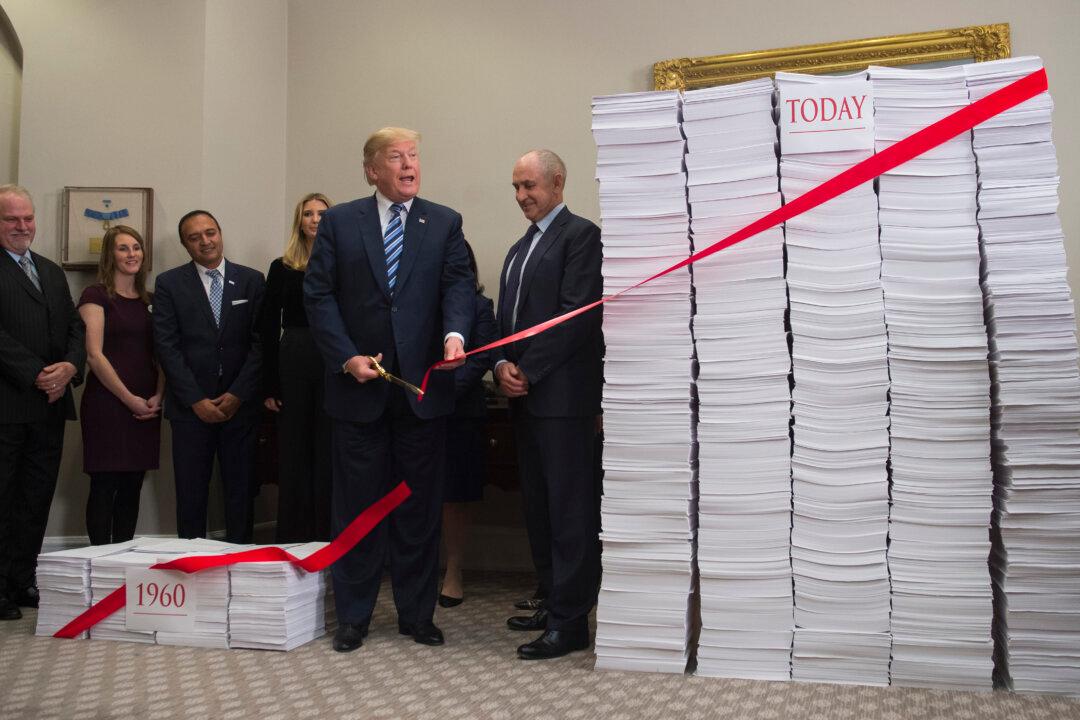Economists are divided over the impact of regulations on economic growth. Some claim there is weak evidence that deregulation stimulates growth. Some economists and business leaders, however, credit President Donald Trump’s regulatory rollback as reasons for an economic uptick and stock market boom.
Within 10 days of taking office, Trump ordered his team to slash regulatory hurdles. He signed in January last year an executive order that required two past rules to be removed for every new regulation proposed.





